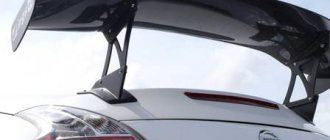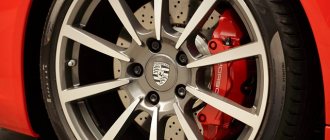The final point is the maximum resource of the selected car
If you are choosing a good car on the secondary market, then you should approach the choice carefully. Even if you want to buy a car from a good friend or relative, remember all the thousands of stories you have heard about buying junk cars. Even from your closest friends you can often buy a terrible car - all methods are good when selling a used car. Therefore, to find out the optimal mileage, it is worth performing an analysis using some data:
- ratio of year of manufacture and mileage - if the car traveled less than 15,000 km in 1 year, most likely the mileage was changed; on average in Russia they drive about 20,000 km in 1 year of operation;
- car model - for each type of transport there is a limit on age and mileage, at which it is better not to buy a model, it is worth finding out this parameter for your vehicle;
- diagnostic data - today not a single experienced motorist will buy a car second-hand without good diagnostics at an independent service, only there the master will give valuable information on transport;
- personal inspection - make sure that the car does not have significant problems with the body and interior, there is no need to invest money immediately after purchase in repair processes;
- first impressions - if you act without unnecessary emotions, then the first impressions when getting to know a car are the most truthful; you should listen to the voice of intuition.
Today we are talking exclusively about mileage, so we will focus on this detail of the choice of transport. As practice shows, it is this that is most important for the buyer. In the future, all operation of the car will be based on mileage. Therefore, it is worth taking a more careful look at the issue of studying individual characteristics, as well as all the consequences of the wrong choice. So at what mileage is it better to buy a used (used) car?
What indicators need to be taken into account besides mileage
In addition to the age of the car, its technical condition is influenced by the roads on which it was driven. It’s one thing to move around the city and on smooth roads, and quite another to drive off-road. This is especially true for large SUVs.
The body must be in good condition
Bumps and potholes negatively affect not only the chassis, but also directly the body and frame. Cracks appear at the soldered joints, which negatively affects the overall condition of the vehicle. Even with a small mileage on the odometer, the appearance of such a car will be deplorable.
So, what should the mileage limit be for different cars?
The question is: at what mileage is it better not to buy a car at all? Generally speaking, this figure is close to 300,000 km. But this statement is not always true. For example, old Toyotas with classic engines like 4A-FE or 1WZ diesel engines can travel up to 500,000 km without any major repairs. But it’s better not to buy modern cars with 200,000 km on the odometer. There are some special nuances that are worth considering:
- Engine. Read reviews about a specific unit, what problems may arise in it if you buy it with high mileage. Also find out the factory resource and data from owner reviews.
- Transmission. For example, it is better not to buy robotic gearboxes like the DSG-7 from VAG after 120,000 km; CVTs from Nissan and other Japanese companies have a service limit of 150,000 km.
- Steering rack. For many foreign cars, the service life of the steering rack is 100-120 thousand km. When purchasing, check to see if this very expensive element of the machine’s design is dying.
- Suspension. For most modern vehicles, the entire suspension has a service life of about 200,000 km, after which it will have to be almost completely replaced.
- Body. Depending on the number of kilometers traveled, the body also suffers. Corrosion on the arches and bottom may appear already at 120-150 thousand km, and then everything will only get worse.
As you can see, a lot depends on the odometer readings. German cars fall apart with high precision. If the unit is supposed to travel 150 thousand km, it is unlikely to travel more. This can be clearly seen on the Skoda Fabia HTP with a 3-cylinder 1.2 engine. Its service life is just 150,000 km, and on the secondary market, most cars are sold with a mileage of 140-145 thousand km. If you do not know this unit problem, you may become a victim of such ignorance.
Misconception #4. Buy from a private seller only
There is still an opinion among buyers that it is better to buy a used car from private sellers, and that car dealerships and resellers should be avoided. Indeed, both of them have gained fame as not the most reliable sellers: “gray” car dealerships use cunning schemes and brazenly deceive buyers, and resellers sell hastily restored junk cars. But the automobile market in Russia is undergoing dramatic changes - the number of trade-in transactions with official dealers is growing, large companies selling used cars are emerging that offer proven cars, provide guarantees and provide favorable conditions. But many private sellers do not neglect the opportunity to hide the mileage or hide the technical condition of some components.
“We examined a 2007 Nissan X-Trail in Krasnodar, the seller is a private owner. For its age, the car is very good: in its original color, original title, a couple of flaws in the body. One of the minuses is the twisted mileage: 123 thousand on the odometer, obviously more based on the condition of the interior. After the test drive, we took it to a partner service, the diagnostics did not reveal anything criminal. Only the steering rack, the right front caliper (it went sour) and the front left boot were condemned. We decided to take it. A few days later, while the crossover was being prepared for sale, the check light came on and the engine refused to run smoothly. We took the X-Trail to the service station again, where they discovered that the variator was slipping and its sudden death. I had to put the car up for auction for professional buyers and sell it at a loss,” said Mikhail Ertsev, operating director of the Automama used car retail chain.
Special occasions - look at the most important moments in the car
The mileage for each model and for each modification of the vehicle will have different features. Take for example the Volkswagen Passat B6, which is 10 years old. With the 1.8 TSI engine, this car starts to show problems already at 120,000 km, which is quite low for a German. But diesel units can easily last up to 300,000 km with a manual transmission and up to 220-250 thousand km with an automatic transmission. The automatic transmission is the first to break down. Therefore, you should look at the car’s mileage as follows:
- be sure to take into account the make and model, since these are the indicators that most often determine the attractiveness of a vehicle on the secondary market; mileage itself does not mean anything;
- if the car was maintained very well, then even high mileage will not be an obstacle to the purchase, but if the service is poor and the fluids are incorrect, it is better to refuse the purchase altogether;
- manual transmissions last longer, but not on all cars, for example, on Fords produced 7-10 years ago, manual transmissions were less reliable than torque converters;
- It is worth considering the possibility of mileage inaccuracy and be sure to check the car for this factor, otherwise you may get into serious trouble when operating your car;
- be sure to inspect the body, even if the mileage is low, it is worth carefully examining the areas of corrosion, looking at theoretical problems with metal parts, this is very important.
Sometimes mileage is put at the forefront when choosing a car. But this is not always correct. You can buy a Mitsubishi Lancer with 200,000 on the odometer and drive another 100,000 km without significant problems. You can choose the same car with a mileage of 60,000 km, but completely destroyed. The condition of the car greatly depends on the attitude of the driver, the quality of service and other important details. Remember this so as not to get into an unpleasant situation.
What affects machine wear
How long a used car has traveled depends on:
- make of the car and in which country it was produced;
- the road surface on which the car most often drove;
- operating conditions;
- driving habits and car care.
There is no exact value for the mileage of a used car being sold. No one knows what mileage is “normal”. When buying a car, you need to take into account the year of manufacture and compare it with the mileage. However, there are often cases when a driver has only 20,000 km on the clock, but he gets into an infinite number of accidents, so that the car cannot be used afterwards - so it is repaired and sold inexpensively, while others hastily buy it, seeing that the mileage is minimal. Worth their weight in gold, those drivers who very rarely went anywhere in their car carefully looked after it and kept their favorite in pristine condition, as if it had just come off an assembly line.
What elements should you check first?
When buying a used car, you need to remember that the inspection must be comprehensive, otherwise you will not be able to be sure that the car is worth the money. The inspection complex should start with the body. But if you initially buy a car with high mileage, it is worth performing a special inspection.
Key details to learn:
- Interior plastic and seat upholstery. These elements will show you how accurate the car's odometer reading is. Below we will take a closer look at the inspection algorithm.
- Computer diagnostic indicators. Very often, over long runs, the electronics themselves show that not everything is in order with the car. Skilled resellers jam the diagnostic system signals, but they can be detected during diagnostics.
- Paintwork in problem areas. Each car has its own paint failure pattern. It is worth reading on the forums which paint elements will peel off first on the car you are choosing.
- The color of the tanks under the hood. After 300,000 km, the expansion tank and the brake fluid reservoir become noticeably darker. This is simply due to the service life, but up to 200,000 km they usually remain light.
- New elements of the engine compartment. If a Japanese car you are buying with 120,000 km has a new generator or starter, you need to pay more attention to the originality of the mileage. You are most likely being deceived.
Of course, there are many more details to look at during the car selection process. Next, we will look at a car inspection algorithm that you can apply in the process of choosing a car on the secondary market.
How to choose a car to your liking
For example, the car looks good outwardly, and the mileage is only 15 thousand, but in fact the driver was inexperienced and clumsy. Without having time to straighten out the car after one accident, he immediately flew into another. I had it done in a couple of years, put the body in order and put the junk car with low mileage up for sale.
And then you can stumble upon a 15-year-old “aged” version, which the owner did not let even a speck of dust sit on, he cared for him as if he were a family member. There, neither the year of manufacture nor the mileage should scare you - the car is in exemplary condition.
Rules for the initial verification of mileage originality
Finding out if a car's odometer is crooked is not as difficult as you might think. The problem is that they twist the meter using rather primitive methods, so often inconsistencies can be found on computer diagnostics. The original mileage is stored in the ECU and some other car units. Therefore, it is recommended to take the vehicle for diagnostics to a good service center before purchasing. You can check the mileage yourself for free. To do this, pay attention to the following details:
- body damage - on foreign cars, chips and scratches begin to overcome the body after 150,000 km; before that, the paintwork on almost all cars holds up just fine;
- domestic cars last up to 100,000 km, but some chips may appear even earlier, the quality of the paintwork on VAZs is not very high, but the interior can show the real condition;
- in the interior, pay attention to the condition of the steering wheel, gear knob, handbrake and main fabric parts; the degree of wear can indicate the actual experience of the car;
- the condition of the engine compartment - in particular, here it is worth looking at the color of plastic parts, which after 200,000 km begin to fade and become coated from the inside (tanks, for example);
- headlights and glass - if the car has an original windshield, the number of small chips can indicate the mileage; also, after 200,000 km, the headlights become dim and become covered with risks.
The problem is that professional resellers know well how to prepare even the most low-quality car for sale. Car businessmen install new steering wheels, polish headlights and glass, and skillfully hide rust on the body. So often the only way to get complete information about the car is to check it at a service station. This is the easiest method to find out how good the condition of the car you are going to buy is.
With what mileage is it better to buy a car?
Buying a used car can be called a lottery - you'll be lucky or unlucky. To minimize the unpleasant outcome, you should compare the age of the vehicle and its mileage.
Age no more than 3 years, mileage up to 50 thousand km
Visually, such a vehicle is practically no different from the same one in the showroom. But this is provided that the car was not involved in an accident. Usually the manufacturer's warranty still applies to some components. As for the resource, it has been depleted by 1/3. This indicates the possibility of uninterrupted operation for several more years. Possible risks - incorrect mileage, worn-out backlight parts, nuances with documents, if the car is on loan, pledged, or seized. With this mileage you can buy a good car.
Age 5-7 years, mileage 50-100 thousand km
Outwardly it looks fresh, but traces of use are also present. We are talking about minor damage, scratches on the hood, slightly dimmed headlights, wear on the steering wheel, and pedal pads. You can find cars that still have limited warranties. After purchasing such a car, you will need global maintenance, replacement of belts, filters, fluid, disks, suspension components, and battery. When paying attention to this category of car, it is important to know not only the mileage statistics, the age of the vehicle, but also the thriftiness of the former owner. Good care gives the chance that the car can last for several years without any major vagaries.
Age about 10 years, mileage 100-150 thousand km
This range indicates that the machine is no longer under warranty. The wear of many parts, chips, scratches, small dents is visually visible; there may be faulty electrical equipment, fuel equipment, automatic transmission, or air conditioning system. If the owner has put a high price on it, this does not mean the car is in good condition. When buying a car, it is recommended to undergo diagnostics at a trusted service station. However, you need to understand that not all defects can be found out in this way. Such an acquisition is a risk, so increased care and proper verification are required.
Age more than 10 years, mileage more than 200 thousand km
Externally and internally, an old car does not look attractive. Having decided to buy this vehicle, you need to prepare for the replacement of large components, major overhaul of the engine, automatic transmission, etc. All this will bring considerable expenses.
You shouldn’t be fooled by a cheap price; you need to approach the purchase of a used car thoroughly. Remember the saying: the miser pays twice!
What problems can occur in a car with high mileage?
Of course, it will be very difficult to generalize about breakdowns of cars with a large number on the odometer. This depends on the size of this figure, as well as the make and model of the car. But some typical malfunctions in this case can be named. Please note that you need to take into account the overall condition of the car, and not look at the mileage in isolation. Sometimes cars with 80,000 km mileage end up in worse condition than vehicles with high mileage but good regular service and storage.
So, the possible problems are as follows:
- failure of automatic transmissions is an expensive breakdown that clearly will not improve the mood of the car owner;
- problems with the cylinder block, which will require major repairs or even replacement of the unit if the cylinder block is made of aluminum without cast iron liners;
- rust on the body - the paintwork is designed for a certain operating cycle, and at a certain mileage it begins to show flaws;
- generator and starter - rotating mechanisms will definitely begin to show problems already at 250,000 km, and then they will simply constantly require repairs;
- interior elements - all the parts that are pressed, rotated and are in contact with the driver during the trip will require especially unpleasant attention.
Each car has its own mileage indicator, which will show the first troubles. For example, in budget Korean and Chinese vehicles, after a mileage of 100,000 km, the first serious problems begin. German vehicles or cars from Japan most often reach 300,000 km without significant breakdowns, and then begin to test the nerves of their owner.
We invite you to watch a video about rolling mileage:
Misconception No. 2. Better painted than chipped
Buyers perceive a completely repainted car better than a car in its original color, but with defects in the body in the form of chips and scratches. The explanation is simple: a car with restored paintwork looks more attractive and gives the impression of higher quality. In fact, a repainted car is always a mystery: why was it painted, how well was the repair done, is there putty under the paint? If you are not an expert, then the answers to these questions will appear in about one to two years, when the varnish begins to treacherously peel off and the putty begins to crack. It will be even more difficult to distinguish between paint due to minor body damage and paint due to a major accident.
“We chose a Hyundai Getz in Moscow for further sale. Two examinations were scheduled. Both sellers want 290 thousand rubles. One car is from 2010 with several repainted body parts, the second is from 2008 with original paint, but with scratches. After examining the first option, it turns out that the entire car has been repainted, the right side member is deformed, and the “TV” has traces of handicraft repairs. The second one, although it ended up with several deep scratches (the barrier was to blame), was not involved in the accident. Therefore, it was purchased, repaired and displayed on our site,” - Mikhail Ertsev, operating director of the retail chain of used cars Automama.
Let's sum it up
In Russian conditions it is very difficult to say at what mileage it is worth buying a car. In most cases, this indicator is not original; resellers are actively twisting the odometer and trying to get more money for the vehicle. But in general, you shouldn’t buy a car with mileage over 200,000 km. More often than not, such a purchase will not be the most successful. Some cars may well go further, but everything is individual here. If all these 200 thousand cars received excellent service and care, then significant problems may not arise. But you will never know the real history of the car.
Therefore, it is better to entrust your money to younger and less used vehicles. Sometimes it won’t hurt to overpay in such a situation. Also, be sure to find out everything about childhood diseases of your car. Otherwise, you will receive a number of unpleasant surprises when purchasing. Some cars are not worth buying even when the odometer reaches 100,000 km. You should be especially careful with small 1.0-1.3 liter engines; they very often are not repaired at all and cause a lot of problems for the buyer on the secondary market. Be sure to get as much information as possible about the car before paying your money for it.
Normal annual mileage
With the exception of taxis, courier services and trucks, the normal average mileage of a car for 1 year can be determined within 20 thousand kilometers per year.
To check this indicator, you need to divide the total mileage by the age of the vehicle.
Thus, for a 5-year-old car, 100,000 km can be considered normal mileage. At the same time, depending on operating conditions, the technical condition can be ideal or deplorable.
What to look for when buying a used car
- Does the car look very “tired”, and the mileage is low? Inconsistency.
- Was the car taxed? Then for her, several hundred thousand mileage in five years will be normal.
- Is it a family car - a shop-dacha? This kind of product will “strain” no more than 50 thousand in five years.
- Is the owner a fan of drifting and not a fan of calling for service? The car is scrapped.
And here's another thing: twisting the odometer. According to statistics, such tricks are performed on every third machine. Moreover, sometimes every new owner does something weird, not knowing that the previous ones have already twisted it.
Always check the car by number and VIN on special resources, so you will find out the real mileage and will not make a blind purchase decision.











